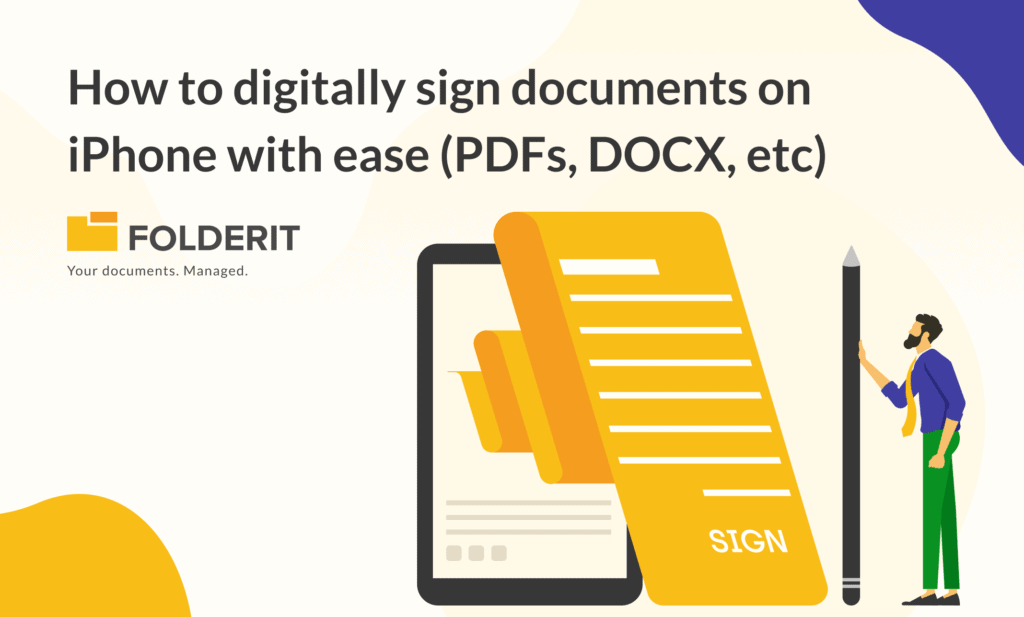The intricate realm of financial services presents its own set of unique challenges. These range from meticulous financial reporting to stringent regulatory compliance requirements.
Central to these operations is the critical role of effective document management. As such its important to explore the key features a Document Management System (DMS) must offer to streamline operations and enhance efficiency in the financial services sector.
Robust Security and Access Controls
The sensitivity and confidentiality of financial data necessitate robust security features in a DMS. Firstly, the DMS must offer strong encryption for data both in transit and at rest to protect it from potential threats. SSL encryption, for instance, encrypts the connection between the user’s device and the data center, thus ensuring data safety.
Role-based access controls are another critical security feature. They restrict access to certain documents based on the user’s role, effectively safeguarding sensitive information from unauthorized internal and external access. This allows financial services to maintain high data integrity and minimize the risk of data breaches.
Audit trails complement security measures by providing a clear record of who has accessed which document, when, and what modifications they’ve made. This transparency is critical for maintaining accountability, investigating incidents, and even aiding in legal proceedings when necessary.
Regulatory Compliance
The financial services industry operates under a multitude of local, national, and international regulations. Adherence to acts such as the Sarbanes-Oxley Act, GDPR, and PCI DSS is mandatory. An efficient DMS should thus have built-in features to facilitate regulatory compliance.
For instance, automated retention and destruction policies help manage the life cycle of documents, ensuring that they are retained for the required period and properly disposed of thereafter. This reduces the risk of non-compliance penalties and the associated legal implications.
Version control with time-stamped versions allows for tracking document edits over time. This is crucial, especially in cases where audit trails are necessary or when recovering a previous version of a document is required.
In addition, an efficient DMS should support e-signatures. E-signatures are becoming increasingly important in the digital world for authorized document approval and validation, especially in light of remote working trends.
Advanced Search and Retrieval
In the financial services industry, time is money. The ability to locate and retrieve documents quickly and effectively is thus crucial. A DMS should offer advanced search functionality, allowing users to search using parameters like the file name, date, document type, metadata, and even content. This saves time and boosts productivity by streamlining the process of finding the right document among possibly thousands.
Furthermore, an ideal DMS should index files for full-text search. This OCR (Optical Character Recognition) feature allows users to search the actual content of documents, not just the file names or metadata. It’s particularly beneficial when dealing with large volumes of documents or when the exact document name is unknown.
Workflow Automation
Financial services often involve a myriad of approval processes and workflows – from loan approvals to transaction authorizations. A DMS capable of automating these workflows can greatly enhance efficiency. It reduces the need for manual intervention, speeds up processes, and significantly reduces the likelihood of human error. Automated workflows also standardize processes, ensuring consistency and reliability in routine operations. This leads to increased productivity and allows employees to focus on more strategic tasks.
Integration Capabilities
Integrating the DMS with existing business applications is another crucial feature that financial services should consider. For instance, integration with email clients or productivity tools like Microsoft Office 365 streamlines document storage and retrieval, making it easier to manage communication records and collaborate on documents.
Integration with Customer Relationship Management (CRM) and Enterprise Resource Planning (ERP) systems ensures a seamless flow of data across platforms. This not only saves time and resources but also eliminates the risk of data duplication or discrepancies between different systems.
Moreover, financial services often rely on third-party apps for electronic signatures (like DocuSign) or for multi-factor authentication (like Okta). Hence, a DMS that can effortlessly integrate with such apps would significantly enhance user experience and improve the speed of operations.
Disaster Recovery
In the realm of financial services, any loss of critical data could lead to enormous financial implications and irreparable damage to the organization’s reputation. Hence, a DMS equipped with disaster recovery capabilities is indispensable.
Features such as triple backups, where data is backed up in three separate locations, ensure that your data is always safe and accessible, regardless of any mishaps. Moreover, features like automatic synchronization between the user’s device and the DMS help maintain up-to-date backups at all times.
Mobile Accessibility
With an increasingly mobile workforce, especially in the era of remote working, a DMS should offer mobile accessibility. This means it should be optimized to work seamlessly on tablets and smartphones, apart from desktops. It allows employees to access and manage documents on the go, leading to improved flexibility and productivity.
Customization and Scalability
Finally, a DMS that offers customization and scalability can cater to the unique needs of financial services. Custom metadata fields can be created based on the specific requirements of the organization. For instance, fields like ‘Client ID’, ‘Transaction Date’, or ‘Document Type’ can be added for easy sorting and searching of documents.
Scalability ensures that as the organization grows, the DMS can handle the increasing load of documents and users without affecting its performance. This feature protects the organization’s investment in the DMS and ensures it remains a valuable tool as the organization evolves.
Transforming Financial Services: The Right DMS Makes All the Difference
The right Document Management System like Folderit can revolutionize how financial services manage their documents. By focusing on features like robust security, compliance support, advanced search capabilities, workflow automation, integration capabilities, disaster recovery, mobile accessibility, and customization, financial services can enhance efficiency, improve compliance, and drive growth.



